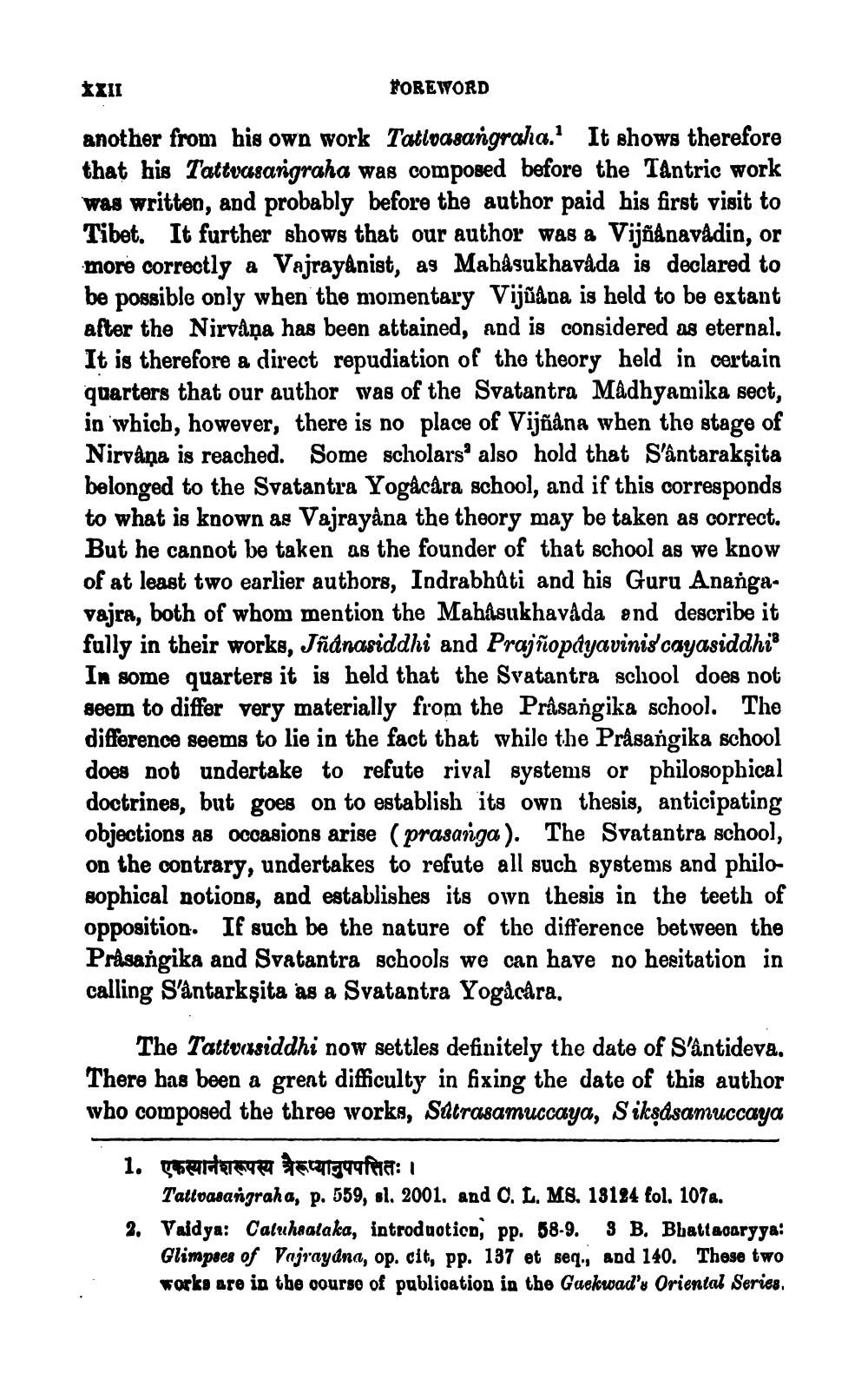________________
XXII
FOREWORD
another from his own work Tattvasangraha. It shows therefore that his Tattvasangraha was composed before the Tantric work was written, and probably before the author paid his first visit to Tibet. It further shows that our author was a Vijñânavådin, or more correctly a Vajrayânist, as Mahasukhavada is declared to be possible only when the momentary Vijuana is held to be extant after the Nirvana has been attained, and is considered as eternal. It is therefore a direct repudiation of the theory held in certain quarters that our author was of the Svatantra Madhyamika sect, in which, however, there is no place of Vijñâna when the stage of Nirvana is reached. Some scholars also hold that S'ântarakṣita belonged to the Svatantra Yogâcâra school, and if this corresponds to what is known as Vajrayâna the theory may be taken as correct. But he cannot be taken as the founder of that school as we know of at least two earlier authors, Indrabhûti and his Guru Anangavajra, both of whom mention the Mahâsukhavada and describe it fully in their works, Jñánasiddhi and Prajñopayavinis cayasiddhi In some quarters it is held that the Svatantra school does not seem to differ very materially from the Prâsangika school. The difference seems to lie in the fact that while the Prâsangika school does not undertake to refute rival systems or philosophical doctrines, but goes on to establish its own thesis, anticipating objections as occasions arise (prasanga). The Svatantra school, on the contrary, undertakes to refute all such systems and philosophical notions, and establishes its own thesis in the teeth of opposition. If such be the nature of the difference between the Prasangika and Svatantra schools we can have no hesitation in calling S'ântarkşita as a Svatantra Yogâcâra.
The Tattvasiddhi now settles definitely the date of S'ântideva. There has been a great difficulty in fixing the date of this author who composed the three works, Satrasamuccaya, Siksasamuccaya
1. एकस्यार्नशरूपस्य त्रैरूप्यानुपपत्तितः ।
Tattvasangraha, p. 559, sl. 2001. and C. L. MS. 13124 fol. 107a. 2. Vaidya: Catuhsataka, introduction, pp. 58-9. 3 B. Bhattacaryya: Glimpses of Vajrayana, op. cit, pp. 137 et seq., and 140. These two works are in the course of publication in the Gaekwad's Oriental Series.




